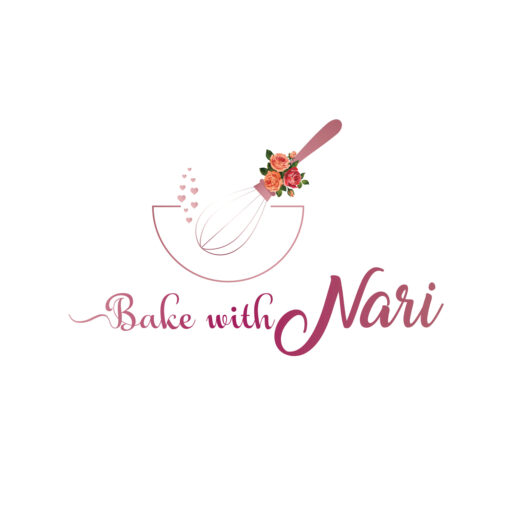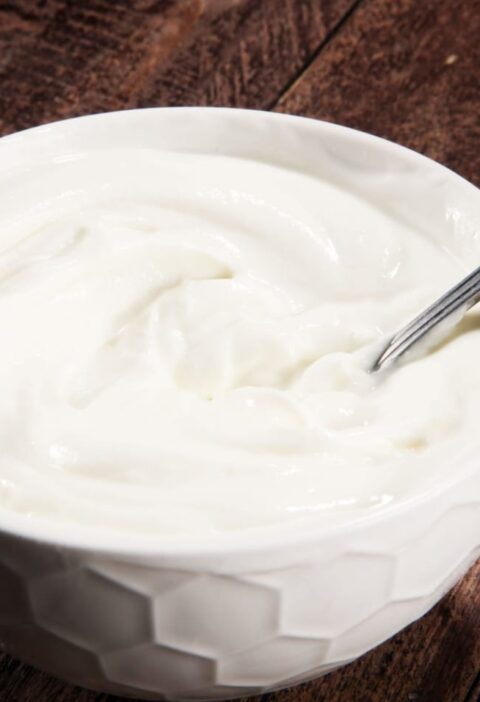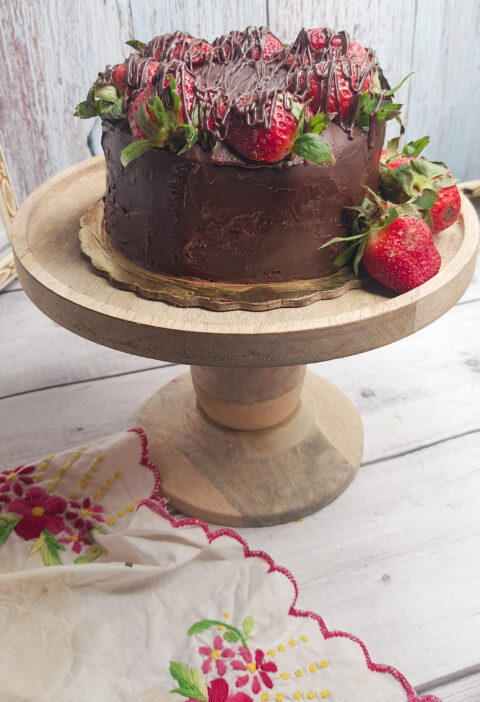Brownies are a joy to eat but have you ever wondered about the history of the brownie, ever had questions about how a brownie gets that crackly top or how many types of brownies are there or what makes brownies fudgy if yes then this article is for you. Its an all you need to know about brownie article, with an amazing eggless brownie recipe below.

The big question what are brownies? My answer Brownies are little pieces of heaven that you can’t do without and if you have been living under a rock and have not eaten brownies you make them now, like now. Brownies are very popular now days and there are many types of brownies available in the market. My Eggless Peanut butter Brownies are to die for, give it a go and you won’t be disappointed.
Where did the brownies originate? All you need to know about brownies:
On doing a bit of sleuthing on the internet I found out that there are a few popular theories about the history of brownies.
- The First Brownie Recipe: One theory suggests that the first brownie recipe appeared in the late 19th century in the United States. It is attributed to Fannie Farmer, who included a recipe for “brownies” in her 1896 cookbook, “The Boston Cooking-School Cook Book.” These brownies were described as molasses-based bars with walnuts.
- Bertha Palmer’s Contribution: Another theory involves Bertha Palmer, a socialite and wife of Chicago businessman Potter Palmer. Legend has it that she requested a special dessert for the Chicago World’s Columbian Exposition in 1893. It is said that a pastry chef at the Palmer House Hotel created a chocolate dessert similar to a brownie, which became popular and gained widespread recognition.
- Adaptation of a Cake Recipe: There is also a theory that brownies were a result of adapting a chocolate cake recipe. It is believed that the leavening agents, such as baking powder or baking soda, were reduced or omitted to create a denser, fudgier texture.
No matter how the brownies originated they are a delicious baked dessert that originated in the United States. They are characterized by their rich, dense, and fudgy texture, often accompanied by a deep chocolate flavor. They are often described as a cross between a cake and a cookie, with a dense and moist texture.
Ingredients and Process of Brownies– All you need to know about brownies
Brownies are typically made with ingredients such as chocolate (either melted chocolate or cocoa powder), butter, sugar, eggs, and flour.
- Chocolate: Brownies commonly use chocolate to provide the rich and indulgent flavor. You can use either unsweetened chocolate, semisweet chocolate, or bittersweet chocolate. Melted chocolate or cocoa powder (often combined with fat, such as butter) can be used to incorporate the chocolate flavor.
- Butter: Butter adds moisture, richness, and flavor to brownies. It also helps create a tender texture. Unsalted butter is often used, but salted butter can be used with adjustments to the amount of added salt in the recipe.
- Sugar: Granulated sugar is the primary sweetener in brownies. It provides sweetness and contributes to the texture and structure of the baked brownies. Brown sugar can also be used to add moisture and a hint of caramel flavor.
- Eggs: Eggs serve as a binding agent, providing structure and stability to the brownie batter. They also contribute to the moisture and richness of the final product. Large eggs are typically used in most recipes.
- Flour: All-purpose flour is commonly used in brownie recipes. It provides structure and helps give the brownies a slight chewiness. Some recipes may call for cake flour for a lighter texture or gluten-free flour for those with dietary restrictions.
- Leavening Agents: Baking powder or baking soda is sometimes included in brownie recipes to give them a slight lift and help create a softer texture. However, not all brownie recipes require leavening agents, especially those aiming for a denser, fudgier texture.
- Vanilla Extract: Vanilla extract is often added to enhance the overall flavor of the brownies. It adds a subtle and aromatic sweetness.
- Salt: A pinch of salt helps balance the sweetness and enhances the flavors in the brownies. It is commonly added to the dry ingredients or incorporated with the melted butter.
- Optional Additions: Brownie recipes can be customized with additional ingredients. Common add-ins include nuts (such as walnuts or pecans) for crunch and flavor, chocolate chips for extra bursts of chocolate, or even dried fruits, shredded coconut, or candies for variations.
It’s important to note that different recipes may have variations in the types and quantities of ingredients used. Additionally, some dietary preferences or restrictions may call for alternative ingredients, such as dairy-free substitutes, gluten-free flour, or egg replacers.
The basic process of making brownies involves melting the chocolate and butter together, combining them with the other ingredients, and then baking the batter in a square or rectangular pan. The resulting brownies have a rich chocolate flavor and a variety of textures, ranging from fudgy to cakey, depending on personal preference and the recipe used.
Types of Brownies
Brownies come in various types and flavors, allowing for a wide range of delicious options to suit different tastes. Here are some popular types of brownies:
- Classic Brownies: Classic brownies are the quintessential version, characterized by their rich, fudgy texture and intense chocolate flavor. They often have a dense consistency and a slightly crackly top.
- Cakey Brownies: Cakey brownies have a lighter and more airy texture, resembling a traditional chocolate cake. They have a softer crumb and are less dense than classic brownies.
- Chewy Brownies: Chewy brownies strike a balance between fudgy and cakey. They have a slightly denser texture than cakey brownies but remain moist and chewy. Chewy brownies often have a thin, crackly top.
- Blondies: Blondies are a variation of brownies that do not include cocoa powder. Instead, they have a vanilla or butterscotch base, resulting in a lighter color and a rich, caramel-like flavor. Blondies have a dense and chewy texture, similar to brownies.
- Triple Chocolate Brownies: Triple chocolate brownies are a chocolate lover’s dream. They incorporate three types of chocolate: cocoa powder, melted chocolate, and chocolate chips. The result is an extra-rich and indulgent brownie with intense chocolate flavor and a fudgy texture.
- Walnut or Pecan Brownies: Adding walnuts or pecans to brownie batter is a popular variation that provides a pleasant crunch and a nutty flavor. The nuts are often mixed into the batter or sprinkled on top before baking.
- Mint Brownies: Mint brownies feature a layer of mint-flavored filling or mint chocolate chips mixed into the batter. The combination of chocolate and mint creates a refreshing and delightful flavor.
- Cheesecake Brownies: Cheesecake brownies combine two beloved desserts—brownies and cheesecake—in one delicious treat. They consist of a layer of creamy cheesecake swirled into the brownie batter, resulting in a marbled appearance and a delightful contrast of flavors.
- Peanut Butter Brownies: Peanut butter brownies incorporate peanut butter into the batter, creating a delightful blend of chocolate and peanut flavors. They often have a fudgy texture and may include swirls or pockets of peanut butter throughout.
- Gluten-Free or Vegan Brownies: These variations cater to individuals with specific dietary preferences or restrictions. Gluten-free brownies are made without wheat flour, while vegan brownies omit animal products such as eggs and dairy. They can be just as delicious as traditional brownies and are suitable for those following gluten-free or plant-based diets. My Wholewheat, Ragi Brownies are a treat for the vegans and is totally sugar free.
These are just a few examples of the many types of brownies you can find. Experimenting with different ingredients and flavors can lead to endless possibilities and delightful variations of this beloved dessert.
How do you get that Crackly top ?
he crackly or shiny top on brownies is often desired as it adds visual appeal and texture to the finished dessert. Achieving this crackly top can be attributed to several factors in the baking process. Here are some techniques that can help you achieve that desired result:
- Proper Mixing: When making brownie batter, it is important to mix the wet and dry ingredients just until they are combined. Overmixing can lead to the development of gluten, which can result in a more cake-like texture and a smoother top. To encourage the crackly top, mix the ingredients until they are just incorporated.
- Using the Right Amount of Fat: The fat content in brownies contributes to their richness and texture. Using a sufficient amount of fat, whether it’s butter or oil, helps in achieving the crackly top. Most brownie recipes call for a good amount of fat, typically in the form of butter. The fat creates a barrier on the surface, promoting the crackling effect.
- Beating the Batter: Some recipes recommend beating the batter vigorously for a short period of time, usually around 30 seconds, before pouring it into the baking pan. This technique incorporates air into the batter and can contribute to the formation of the crackly top.
- Sugar: The sugar in the brownie recipe also plays a role in achieving the desired texture. Granulated sugar is typically used, and its presence on the surface of the brownie can help create the crackly top. The sugar forms a thin crust during baking, contributing to the characteristic crackle.
- Baking Time and Temperature: The baking time and temperature are critical factors in achieving the crackly top. Most brownie recipes require a relatively high temperature, usually around 350-375°F (175-190°C). Baking at this temperature helps to create a crust on the top, resulting in the desired crackle. It’s essential to follow the recipe instructions and avoid overbaking, as this can lead to a drier texture and reduce the crackly effect.
- Size and Type of Baking Pan: The type and size of the baking pan can influence the texture and appearance of the brownies. A smaller baking pan, such as an 8×8-inch (20×20 cm) pan, can result in thicker brownies and a more pronounced crackly top. Using a glass or metal pan can also affect the baking time and the development of the crust.
Keep in mind that achieving the crackly top is not always guaranteed, as it depends on various factors, including the specific recipe and baking conditions. However, by following these techniques, you can increase the likelihood of obtaining that desirable texture in your brownies.
Q and A about brownies. All you need to know about brownies.
Some of your most common questions answered
Here are some of the most common questions people ask about brownies:
How do I achieve a gooey and fudgy texture in brownies?
To achieve a gooey and fudgy texture, be sure not to overbake the brownies. Remove them from the oven when the edges are set and a toothpick inserted into the center comes out with a few moist crumbs. Using ingredients like melted chocolate, extra eggs, or reducing the amount of flour can also contribute to a fudgier texture.
Can I substitute baking powder for baking soda in brownie recipes?
In most cases, it’s best to follow the recipe and use the specific leavening agent mentioned. Baking powder and baking soda work differently, so substituting one for the other can affect the texture and rise of the brownies. However, there are specific recipes that call for either baking powder or baking soda, so it’s important to follow the instructions accordingly.
Can I make brownies without eggs?
Yes, you can make brownies without eggs. There are various egg substitutes you can use, such as applesauce, mashed bananas, condensed milk, yogurt, or flaxseed meal mixed with water. These substitutes help to bind the ingredients together and maintain moisture in the brownies.
How can I make my brownies less sweet?
To reduce the sweetness of brownies, you can try reducing the amount of sugar called for in the recipe. However, keep in mind that sugar not only adds sweetness but also contributes to the texture and structure of the brownies. You can also experiment with using dark chocolate or cocoa powder with a lower sugar content.
How long do brownies stay fresh?
Brownies can stay fresh for 2-3 days when stored in an airtight container at room temperature. To extend their freshness, you can refrigerate them for up to a week or freeze them for up to three months. Proper storage helps maintain their texture and flavor.
Can I use margarine instead of butter in brownies?
Yes, you can use margarine as a substitute for butter in brownies. However, keep in mind that margarine contains a higher water content than butter, which can affect the texture and flavor of the brownies. It’s recommended to use a margarine specifically formulated for baking to achieve the best results.
How can I prevent my brownies from becoming dry?
To prevent dry brownies, make sure not to overbake them. Follow the recommended baking time in the recipe and check for doneness using a toothpick or skewer. Additionally, avoid overmixing the batter and be careful not to overmeasure the flour, as excess flour can result in a dry texture.
Can I add chocolate chips to my brownie batter?
Yes, adding chocolate chips to the brownie batter is a common variation that adds extra bursts of chocolate flavor and texture. Stir them into the batter just before pouring it into the baking pan.
Can I use different types of chocolate in brownies?
Yes, you can use different types of chocolate in brownies, such as milk chocolate, dark chocolate, or semi-sweet chocolate. Different chocolates will impart varying levels of sweetness and intensity to the brownies, allowing you to customize the flavor to your preference.
Can I double or halve a brownie recipe?
Yes, you can double or halve a brownie recipe to adjust the batch size. However, be aware that altering the recipe quantities may affect the baking time and final texture. Adjust the baking time accordingly and keep an eye on them while baking to ensure they are properly cooked.
Is there a difference between a brownie and a cake?
While brownies and cakes share similarities in their ingredients and baking processes, there are distinct differences that set them apart. Here are some key differences between brownies and cakes:
- Texture: The texture is perhaps the most noticeable difference between brownies and cakes. Brownies have a dense, fudgy, and moist texture, often described as being chewy or gooey. They are more compact and have a rich, indulgent consistency. Cakes, on the other hand, have a lighter, fluffier, and softer texture. They are typically more airy and spongy.
- Fat Content: Brownies usually have a higher fat content than cakes. They often contain more butter or oil, which contributes to their dense and fudgy texture. Cakes, on the other hand, tend to have a lighter and more delicate texture due to a lower fat content.
- Leavening Agent: Brownies typically contain less or no leavening agents like baking powder or baking soda. This omission contributes to their denser texture. Cakes, on the other hand, rely on leavening agents to create a lighter and fluffier structure.
- Mixing Method: The mixing method for brownies and cakes can differ. Brownies are often made using a “one-bowl” or “stirred” method, where the wet and dry ingredients are mixed together until just combined. This minimal mixing helps create a denser texture. Cakes, on the other hand, may require more elaborate mixing methods like creaming butter and sugar, alternating wet and dry ingredients, or incorporating whipped egg whites for a lighter texture.
- Serving and Presentation: Brownies are typically cut into squares or rectangles and served in individual portions. They are often enjoyed without frosting or with minimal toppings. Cakes, on the other hand, are often served as whole cakes or in slices. They are commonly frosted and decorated with various icings, fillings, or garnishes.
My Favorite Eggless Brownie Recipe
My eggless brownie recipe has been one of my most popular recipe on my Instagram page. Lots of subscribers who have tried it and given me rave reviews. Its eggless , made with a few pantry staples and delicous.
Ingredients
Instructions
- Preheat the oven to 175 degree C. Line and grease a 7 inch brownie pan. Melt the butter and chocolate in a medium microwave bowl or in a saucepan set over low heat. Once melted add the condensed milk, vanilla essence and the sugar. Mix it well. Now , add the dry ingredients Flour, coco powder a pinch of salt to the wet mix. Now, stir it well until all the flour has been incorporated. Spoon the batter into the prepared pan and bake for 20 to 25 minutes until the brownies feel firm to the touch. Remove them from the oven and cool on a wire rack . Cut them into squares and enjoy !!
Notes
I used 45 percent coco solid covurture choclate.
Butter I used was salted.
Brown Sugar preferably Dark brown or you can use dark muscovado.
Use only sweetened Condensed Milk .
Can add 40 gm of dark choclate chips if desired.
If you have liked my brownie recipe here are a few more you should try







